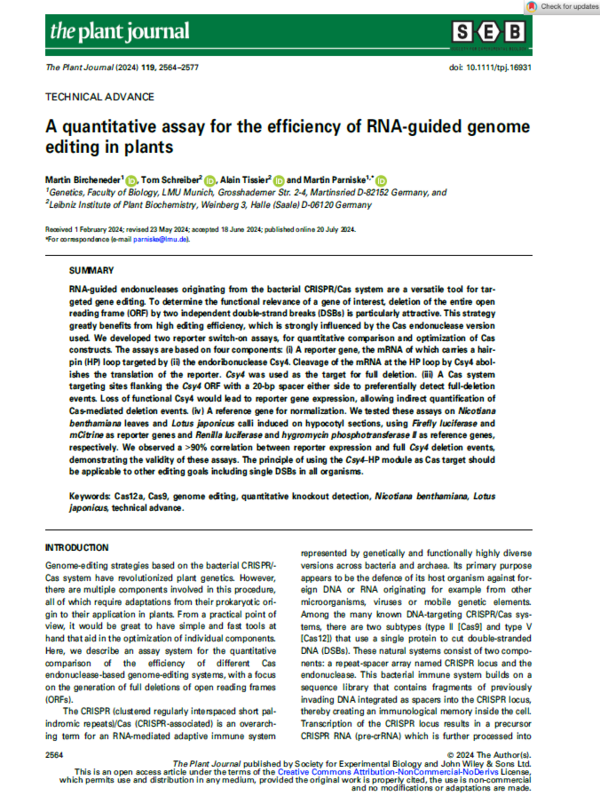CRISPR/Cas optimization: New assay for efficiency comparison.
The CRISPR/Cas system is an established gene editing tool, which is continuously refined to create more precise and efficient variants that are optimized for specific applications. These optimizations require assays that can compare the efficiency of different Cas variants.
A research team from LMU Munich and IPB recently developed such an assay that enables a fast, visual, and quantitative comparison. Their focus was on gene editing that results in complete deletions of open reading frames (ORFs), which are gene segments that encode proteins. To visualize these editing events, the researchers used a switch-on mechanism for a reporter gene that they transformed into plants.
However, the reporter gene – either a fluorescent protein or a luciferase enzyme that can produce a visible signal – was engineered so that its mRNA contains a hairpin loop (HP). This hairpin loop is recognized and cleaved by the also introduced endoribonuclease Csy4, thereby interrupting the translation of the reporter. No reporter signal can therefore be detected with a functioning Csy4.
Csy4, in turn, served as a target for complete deletion by a CRISPR/Cas system to be tested. If the entire Csy4 ORF is successfully deleted and Csy4 is therefore no longer present, it leads to the expression of the reporter gene, allowing a rapid, indirect quantification of gene-editing events.
The researchers from Halle and Munich found a more than 90% correlation between reporter expression and complete Csy4 deletion events, which underscores the reliability of their assay. Furthermore, according to the scientists, the switch-on-based reporter system is better suited than a switch-off system based on the direct deletion of the reporter gene, which does not lead to an immediate loss of the reporter signal.
Switched-off reporters due to Cas-mediated deletion events would be difficult to detect against a background of still active reporter signals. In contrast, a switch-on-assay without a signal background very sensitively displays the events based on the reporter signals. The authors of the study point out that the principle of the Csy4-HP module as a Cas target should also be transferable to other reporters and organisms, thus facilitating the evaluation of different Cas variants.
Original publication:
Bircheneder M, Schreiber T, Tissier A, Parniske M. A quantitative assay for the efficiency of RNA-guided genome editing in plants. Plant J. 2024 Sep;119(5):2564-2577. doi: 10.1111/tpj.16931. Epub 2024 Jul 20.



